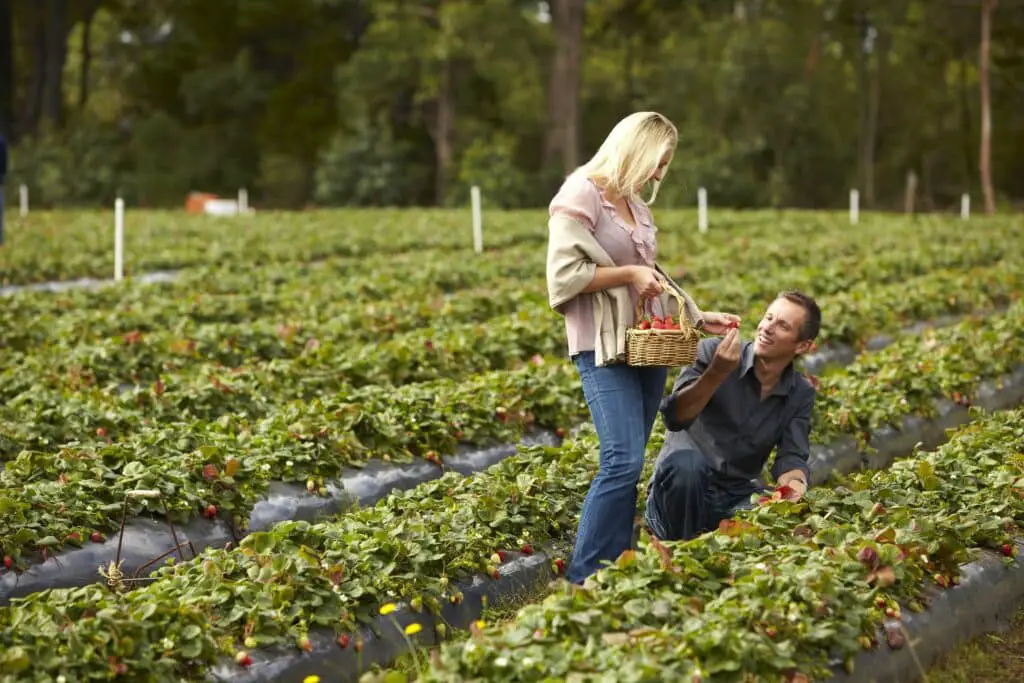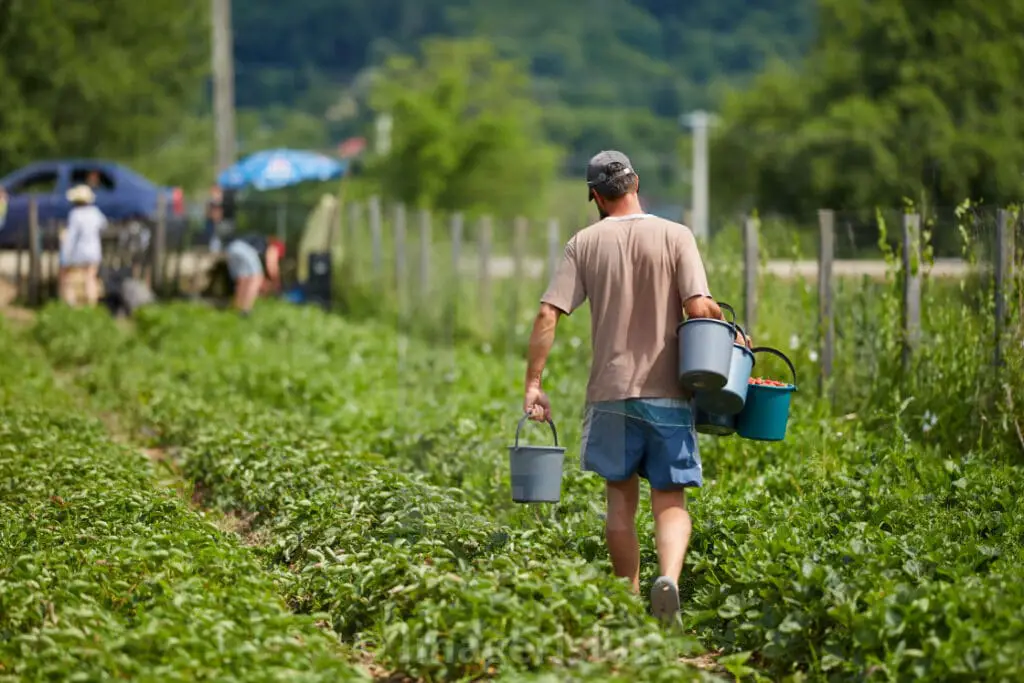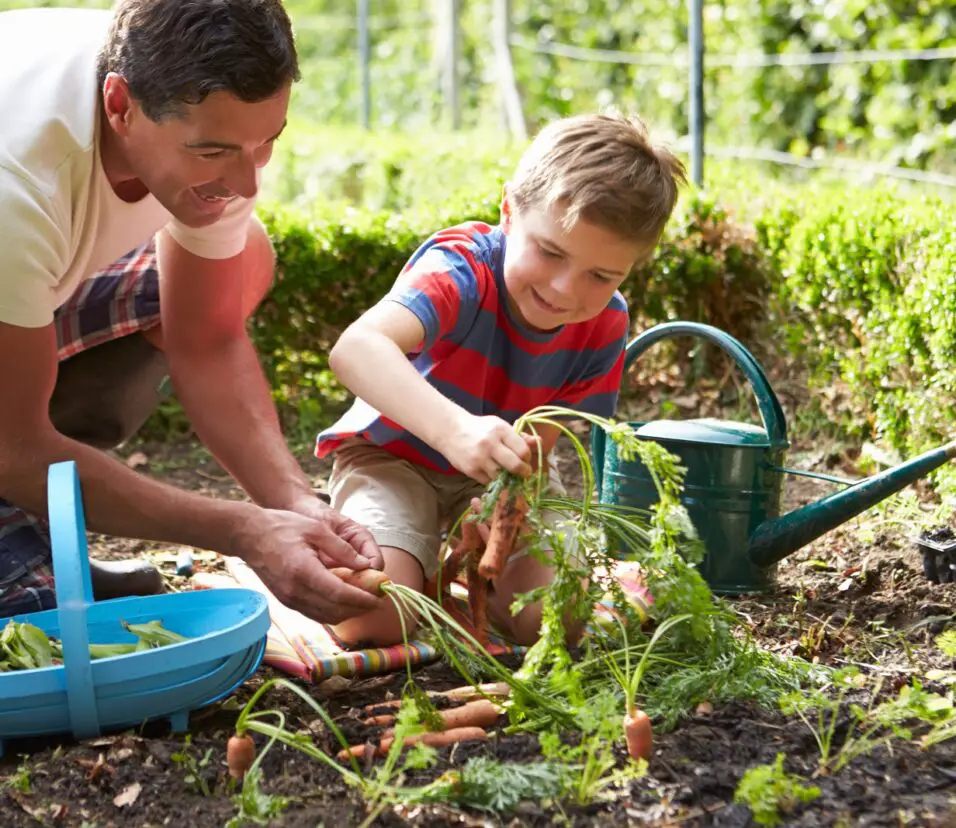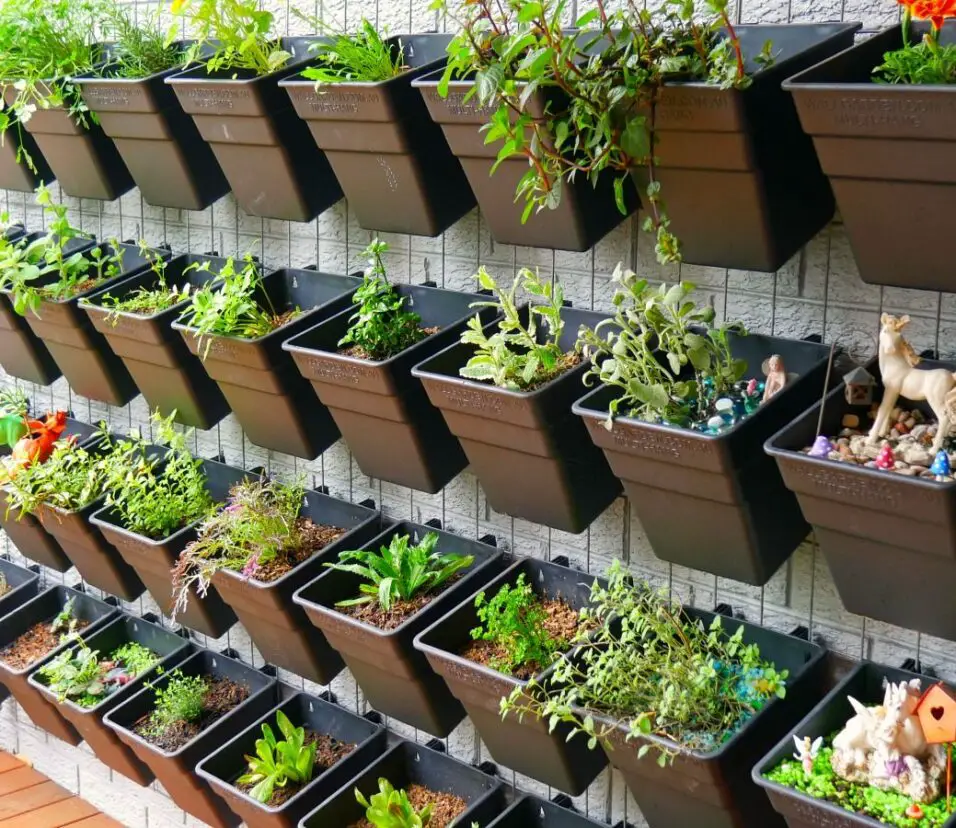Is Market Gardening Commercial Or Subsistence
Introduction
Is Market Gardening Commercial Or Subsistence: A term that refers to the practice of growing and selling fruits, vegetables, and other horticultural products. It has been a vital part of agriculture for centuries, providing communities with fresh and nutritious produce. However, is market gardening a commercial venture or a subsistence activity.
On one hand, market gardening can be seen as a commercial endeavor. Farmers who engage in market gardener cost often cultivate their crops on a larger scale, with the intention of selling their produce to consumers, restaurants, or grocery stores. They may employ various marketing strategies to promote their products and maximize profits. Additionally, market gardeners may invest in specialized equipment, such as irrigation systems or greenhouses, to enhance productivity and meet the demands of the market.
On the other hand, market gardening can also be viewed as a subsistence activity. In some cases, individuals or families may engage in market gardening primarily to meet their own needs rather than for commercial purposes. They may grow a variety of crops in their backyard or on a small plot of land, using traditional and sustainable farming methods. The produce from their garden may be consumed by the household or shared within the community, contributing to food security and self-sufficiency.
It is important to note that the distinction between commercial and subsistence market gardening is not always clear-cut. Many market gardeners operate on a spectrum, combining elements of both commercial and subsistence practices. They may sell a portion of their harvest while also using some of the produce for personal consumption or sharing with others. This hybrid approach allows market gardeners to generate income while also enjoying the benefits of growing their own food.

Is market gardening Labour intensive?
Market gardening is both labor and capital-intensive, requiring irrigated land, hybrid seeds, fertilizers, pesticides, greenhouses, and artificial heating. Market gardening refers to the practice of growing and selling fruits, vegetables, and other horticultural products. It is often done on a small scale and is typically focused on providing fresh produce to local markets. One of the key considerations when it comes to market gardening is the amount of labor required to maintain and harvest the crops.
Market gardening can be labor-intensive due to several factors. Firstly, the cultivation and maintenance of crops require regular attention and care. This includes tasks such as planting seeds, watering, weeding, and pest control. These activities often need to be done manually, which can be time-consuming and physically demanding.
Market gardeners often grow a wide variety of crops, each with its own specific requirements. This means that they need to have a good understanding of different plant species and their individual needs. Another factor that contributes to the labor-intensive nature of market gardening is the harvesting and post-harvesting processes. Depending on the crops being grown, harvesting can involve picking, sorting, cleaning, and packaging. These tasks require attention to detail and can be time-consuming, especially during peak harvest seasons.
Additionally, market gardeners often need to handle the marketing and distribution of their products themselves. This includes activities such as packaging, labeling, and delivering the produce to local markets or customers. These tasks require additional time and effort, adding to the overall labor intensity of market gardening. Market gardening can indeed be labor-intensive due to the various tasks involved in cultivating, maintaining, harvesting, and marketing the crops.
What is the difference between market gardening and intensive subsistence agriculture?
Market gardening is a modern type of agriculture. Intensive subsistence agriculture is a traditional type agriculture. 2. Manual labour, scientific technology, knowledge and high capital are used in market gardening.
Market gardening and intensive subsistence agriculture are two different methods of farming that have distinct characteristics and purposes. While both involve the cultivation of crops for consumption, there are several key differences between the two. Market gardening produces high-value crops for local markets. It usually incorporates small-scale production of many fruits, vegetables, and flowers. Gardeners utilize raised beds, greenhouses, and drip irrigation to boost produce yields and quality.
Market gardening aims to grow high-demand crops that can sell for a premium. Market gardeners must consider market developments, consumer preferences, and grower competition while planning and managing. Small farmers sell their food directly to consumers, restaurants, and local marketplaces through market gardening.
However, intensive subsistence agriculture produces adequate food for a family or community. It is common in heavily populated Asian and African regions with little arable land. Manual labor, hand tools, and animal power dominate intensive subsistence agriculture. The main objective of intensive subsistence agriculture is to maximize food production from a small plot of land. Farmers often grow staple crops, such as rice, wheat, or maize, which provide the majority of their diet. The emphasis is on self-sufficiency rather than commercial production, and surplus crops may be sold or traded locally.
Which is an example of commercial farming?
Commercial farming involves growing crops for profit. Parties other than farms buy commercial crop. Commercial farming includes tobacco.
Commercial farming involves growing crops or raising livestock for profit. Large-scale production on vast agricultural regions is normal. Subsistence farming meets the requirements of the farmer and their family, but commercial farming leverages market demand to make money.
Cotton, tobacco, and coffee production are examples of commercial farming. Climate and soil characteristics encourage cash crop cultivation, resulting in good yields and quality. Livestock farming for meat, dairy, and eggs is another commercial practice. This includes cattle, poultry, and pig farms.
Fish and horticulture can be part of commercial farming with income crops and animals. Horticulture grows fruits, vegetables, and ornamental plants, while fish farms raise fish for commercial usage. For optimal growth and marketability, these industries need specific expertise and strategies.
What type of farming is subsistence farming commercial farming?
Subsistence farming
In subsistence farming, the main objective is to produce enough food and resources to sustain the farmer and their family. This type of farming is typically practiced in rural areas and is often characterized by small-scale farming operations. Subsistence farmers usually grow a variety of crops and raise livestock to ensure a diverse and self-sufficient food supply. The farming methods used in subsistence farming are often traditional and labor-intensive, relying on manual labor and simple tools.
Commercial farming
Commercial farming, on the other hand, is focused on producing agricultural products for sale in the market. The primary goal of commercial farming is to generate profit by maximizing crop yields and livestock production. This type of farming is typically practiced on large-scale farms and utilizes modern technologies, machinery, and advanced farming techniques. Commercial farmers often specialize in growing specific crops or raising specific livestock to cater to market demands.
Differences between subsistence farming and commercial farming
The scale of production distinguishes subsistence farming from commercial farming. Commercial farming produces surplus agricultural products for sale, whereas subsistence farming meets the farmer’s and family’s immediate requirements.
Other differences include farming methods and technologies. Commercial farming uses contemporary technology, machinery, and advanced farming practices to maximize output and efficiency, while subsistence farming uses traditional and labor-intensive methods.
What is an example of a subsistence farming?
Shifting cultivation is a method of subsistence farming in which farmers remove and burn trees to plant crops. This agricultural style serves the farmer’s family.
Farmers in subsistence farming grow crops and raise cattle to meet their families’ and communities’ needs. This self-sufficient farming system produces enough food, shelter, and clothing for survival rather than profit. Subsistence farming is frequent in remote developing nations with inadequate technology and resources.
Traditional Southeast Asian rice farming is subsistence farming. Rice is the principal food supply for many small farmers in Thailand, Vietnam, and Cambodia. Hand planting and harvesting are common methods for these small-scale rice growers. The majority of their rice is consumed by their families, with any surplus sold or exchanged locally.
Maize, millet, and sorghum are staple crops in subsistence farming in Africa. These crops thrive in the region’s climate and can feed rural households. Farmers in these locations may keep goats or chickens to supplement their nutrition and sell meat, milk, or eggs
Market gardening produces fruits, vegetables, and other horticultural goods for local markets. Market gardeners grow a range of crops on a modest scale to meet consumer demand for high-quality goods. Profits are maximized by efficiently raising and selling fresh, delicious, and attractive crops.
Market gardening is common in urban and peri-urban regions where fresh produce is in high demand. Farmers can use the proximity to consumers to reduce transportation expenses and get their produce to market promptly and fresh. Farmers’ markets, CSA programs, and local restaurants and grocery shops sell market gardeners’ products.
How does market gardening differ from subsistence farming?
Subsistence and market gardening are various farming methods. Both entail farming for food, but there are important differences.
Market gardening focuses on growing crops for local markets or wholesalers. Gardening aims to make money. Market gardeners raise fruits, vegetables, herbs, and flowers to fulfill consumer demand. Intensive farming methods including raised beds, greenhouses, and irrigation systems improve yields and produce quality.
Subsistence farming focuses on feeding the farmer and their family. Subsistence farmers aim for self-sufficiency and little extra output. To meet their requirements, subsistence farmers plant grains, tubers, and legumes. They generally use traditional farming practices and operate smaller than market gardeners.
What are the main characteristics of a commercial market gardening operation?
One of the main characteristics of a commercial market gardening operation is its scale. These operations are typically larger in size compared to subsistence farms and often utilize modern farming techniques and equipment to maximize productivity. Commercial market gardeners often have multiple fields or greenhouses dedicated to different crops, allowing for a continuous supply of produce throughout the year.
Another important characteristic is the focus on market demand. Commercial market gardeners carefully analyze consumer preferences and market trends to determine which crops to grow and when to harvest them. They aim to produce high-quality, fresh, and in-demand produce that can fetch a good price in the market. This requires careful planning, crop rotation, and the use of sustainable farming practices to ensure a consistent supply of produce.
How does market gardening contribute to the local economy?
Market gardening plays a significant role in contributing to the local economy in several ways. Firstly, it provides a source of fresh, locally grown produce for the community. This not only supports the health and well-being of the residents but also reduces the need for importing food from distant locations. By purchasing produce from local market gardeners, consumers are directly supporting the local economy and helping to create a sustainable food system.
Market gardening creates employment opportunities within the community. These operations require a range of skills, from planting and harvesting to marketing and distribution. As a result, market gardeners often hire local workers, which helps to stimulate the local job market and reduce unemployment rates. Additionally, market gardening can attract tourists and visitors to the area, especially if there are farmers’ markets or farm-to-table events that showcase the local produce. This can boost tourism revenue and promote the region as a destination for agricultural experiences.
What factors determine whether a market gardening operation is considered commercial or subsistence?
There are several factors that determine whether a market gardening operation is considered commercial or subsistence. One of the main factors is the scale of production. Commercial market gardening operations are typically larger in scale and produce crops on a larger scale for sale in the market. These operations often have specialized equipment and employ a larger number of workers to meet the demands of the market. On the other hand, subsistence market gardening operations are smaller in scale and primarily focus on producing enough food for the family or community’s own consumption.
Another factor that determines whether a market gardening operation is commercial or subsistence is the level of income generated. Commercial market gardening operations are primarily focused on generating income through the sale of their crops. These operations often have a well-established market network and may even export their produce to other regions or countries. In contrast, subsistence market gardening operations may generate some income from the sale of surplus produce, but their main goal is to provide food for their own consumption.
The level of investment and infrastructure also plays a role in determining whether a market gardening operation is commercial or subsistence. Commercial operations often require significant investment in infrastructure such as greenhouses, irrigation systems, and storage facilities to ensure the efficient production and distribution of their crops. They may also invest in marketing and advertising to promote their products. Subsistence operations, on the other hand, may rely on more basic and traditional farming methods and may not have the same level of investment in infrastructure.

Conclusion
After analyzing the concept of market gardening and its various aspects, it can be concluded that market gardening is primarily a commercial activity rather than a subsistence one. Market gardening involves the cultivation of high-value crops on a small scale, with the intention of selling them for profit. This is in contrast to subsistence farming, which focuses on growing crops for personal consumption and sustenance.
One of the key factors that differentiate market gardening from subsistence farming is the scale of production. Market gardeners typically cultivate small plots of land and employ intensive farming techniques to maximize their yields. They often specialize in growing high-demand crops such as fruits, vegetables, and herbs, which are in demand in local markets. In contrast, subsistence farmers usually have larger plots of land and grow a variety of crops to meet their own food needs.
Market gardening is predominantly a commercial activity that involves the cultivation of high-value crops on a small scale for profit. Its focus on market demand, intensive production techniques, and economic motivation differentiate it from subsistence farming. While subsistence farming may still exist in certain regions, market gardening has become increasingly prevalent in modern agricultural practices.








